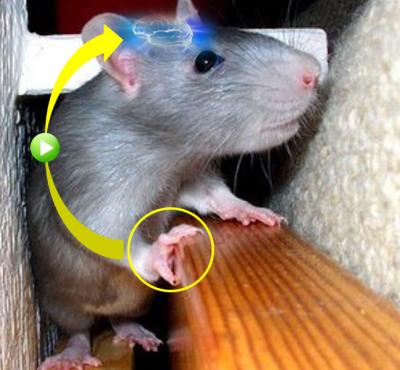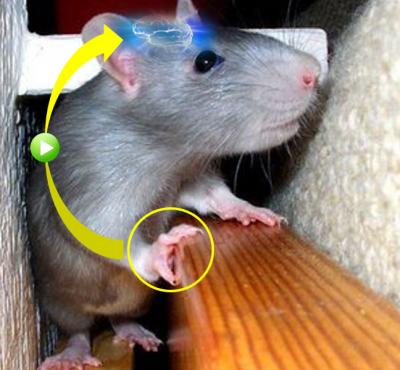
Okazaki, Japan – Each year millions of people worldwide suffer from stroke, which can occur to anyone at any time. While some may recover completely, the majority of survivors will experience some form of impairment that requires a lengthy process toward partial or full recovery of functioning. Therefore, continuous improvement of rehabilitation methods is needed to ensure more positive long-term outcomes among survivors.
Researchers at Japan's National Institute for Physiological Sciences (NIPS) and Nagoya City University (NCU) have identified the increase of the "cortex-to-red nucleus" pathway via post-stroke focused rehabilitation and its connection to the recovery of functioning in intracerebral hemorrhage (ICH) model rats. This crucial finding could pave the way for better rehabilitative methods for humans.
Stroke often causes hemiplegia by lesioning the corticospinal tract, which connects the motor cortex and spinal cord. Intensive rehabilitation is known to be a promising method of promoting functional recovery via the reorganization of lesioned brain circuits. However, the causal relationship between rehabilitation-induced changes of the brain circuits and functional recovery remains unproven.
To validate this relationship, the NIPS-NCU team used an ICH rat model to investigate the mechanisms of the therapeutic effects of intensive rehabilitative training. "We found substantial functional recovery of the paralyzed forelimb when applying forced impaired limb use (or FLU) as rehabilitation," first author Akimasa Ishida explains. "We also uncovered the abundant newly formed connections from the motor cortex to the red nucleus in FLU-treated rats."
To test the contribution of the formation of new cortex-to-red nucleus connections to functional recovery, the researchers selectively blocked the target pathway using a recently developed double-viral infection technique in rats that experienced recovery. After a blockade of the cortex-to-red nucleus connections, deficiency of the forelimb function reappeared in rehabilitated rats.
The results demonstrate that the rehabilitation-induced reorganization of the damaged brain circuits (i.e., robust increase of the cortex-to-red nucleus connections) is responsible for functional recovery. "We provided direct proof of the causal link between the change of the brain circuits and the recovery of functions by rehabilitation," corresponding author Tadashi Isa says. "Further investigation on the finer details of the recovery process induced by FLU will help clinicians, physiotherapists, and patients to combat the devastating effects of stroke."
###
Media Contact
Tadashi Isa
[email protected]
http://www.nins.jp/english/





